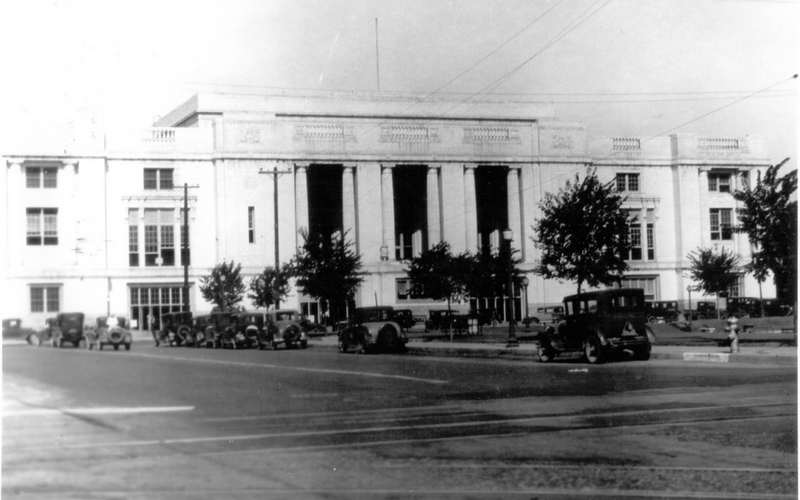Without The Reunion District’s towering, sleek columns of steel and glass, the Downtown Dallas skyline would not cut its instantly recognizable profile. But while these skyscrapers might evoke visions of the city’s bigger-is-better, entrepreneurial, innovatory culture, nestled between them is a reminder of an industry that, in the past, contributed much to Dallas’ growth and prominence.
Eddie Bernice Johnson Union Station, previously known as Dallas Union Terminal, was completed in 1916. At the time, it centralized Dallas’ bustling railroad traffic and created the first truly unified transportation hub, serving passengers throughout the Southwest.
For decades, each of the five rail lines steaming through Dallas serviced its passengers at dedicated stations scattered across the city. But Union Station’s completion didn’t just make riding the rails easier for travelers. It also helped the railroad companies make their operations more efficient — and more profitable. During its heyday, as many as 80 trains and 50,000 passengers visited Union Station every day.
Constructed of white enameled brick, the building’s interior boasts soaring 48-foot ceilings, elegantly arching windows, stately pillars and wrought-iron chandeliers. Original Union Station architect Jarvis Hunt was among the most celebrated minds in the field of train station design. Several of his projects, including Kansas City’s Union Station and the Indianapolis News Building, are listed on the National Register of Historic Places. Union Station is as well, in part because it serves as such a stellar example of Beaux-Art Classical style.
Over the years, many celebrities and historical figures came to Dallas courtesy of Union Station. President Harry S. Truman made a campaign stop there in 1948, eight years after First Lady Eleanor Roosevelt was greeted on its concourse by the Democratic Women’s Luncheon Club. Four years later, Texas native and then-Republican candidate for President Dwight D. Eisenhower arrived to deliver a stump speech. And, in 1960, Elvis Presley was mobbed by fans on his way through Big D en route to Hollywood.
Of course, highway construction and advancements made by the automobile industry would eventually render the passenger train obsolete, and most passenger services at Union Station had ceased by 1969.
But that was far from the end of all Dallas rail activity. The city purchased Union Station outright in the early 1970s. Shortly after, Amtrak arrived, and it continues to sell tickets — from an honest-to-goodness ticket counter — at Union Station to this day. Other rail lines currently operating out of Union Station include the DART Light Rail and the Trinity Railway Express’ Dallas-to-Fort Worth commuter service.
And it could be that the station welcomes even more rail passengers in the future. As the DFW Metroplex population continues to boom, so does the traffic. Commuters looking to eliminate that hassle from their lives may see train travel as a viable alternative.
Either way, Union Station has become a popular attraction for non-travelers. The second floor’s beautifully restored Grand Hall makes it a natural choice as a wedding and event venue, and so it should come as no surprise that Wolfgang Puck Catering has set up shop on the mezzanine.
Twice extensively renovated — first in 1978 by Woodbine, the same developer that built Reunion Tower and the Hyatt Regency Hotel next door, then again in 2008 as part of a $23 million effort to fully modernize the facility — Union Station remains one of the architectural and social anchors of Downtown Dallas.
Where do you go to celebrate the history of our great city? How do you see the Dallas of the past most positively influencing the Dallas of the future? Join us on Facebook and Twitter to share your vision of what makes Downtown Dallas uniquely Texan.


